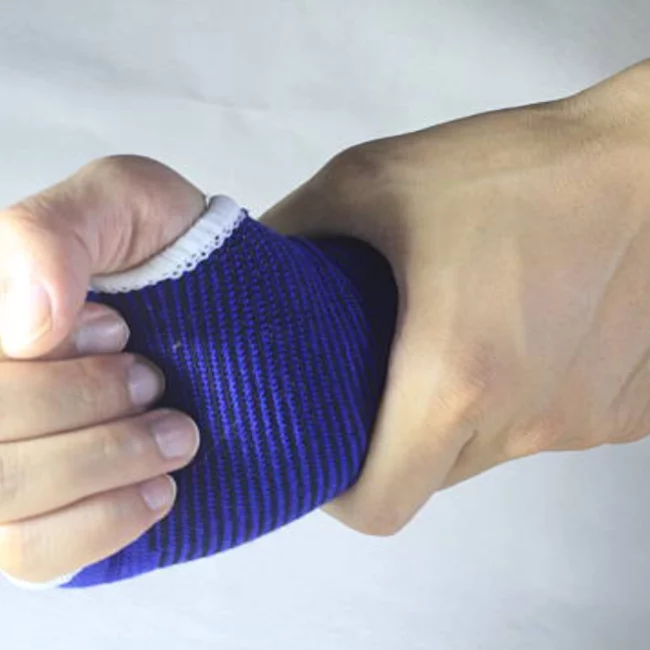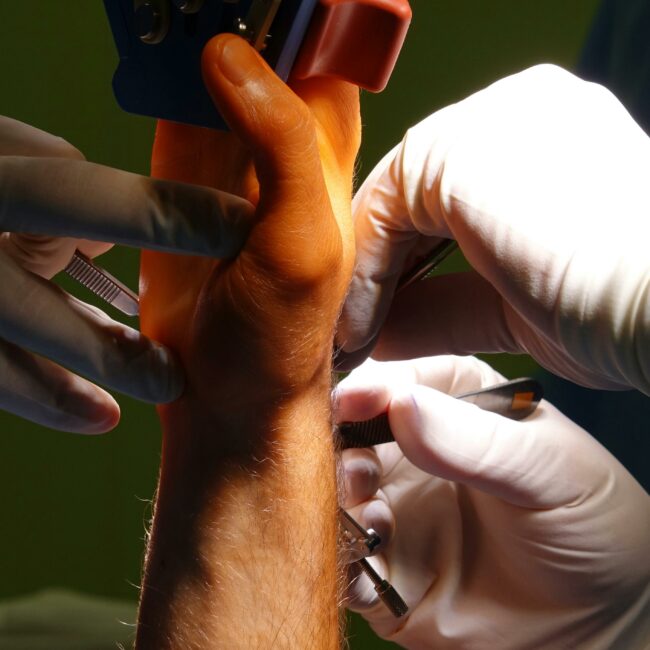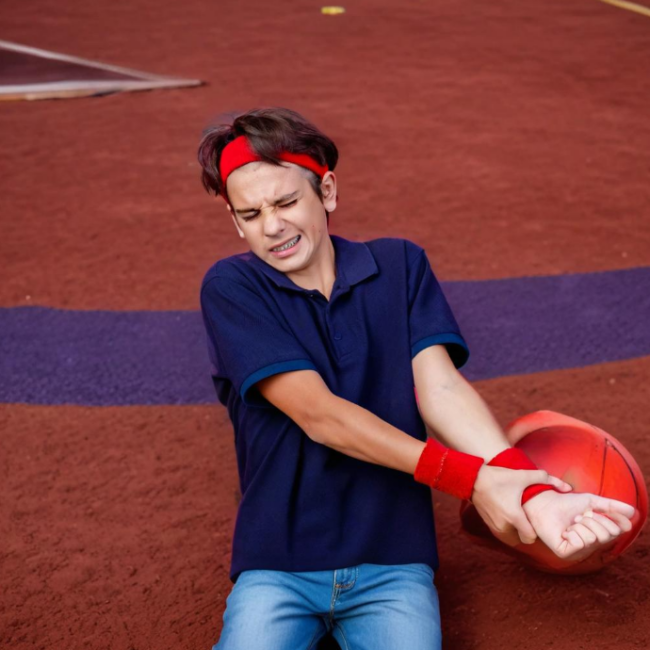
Why Is My Wrist Clicking?
Wrist Clicking, also known as Wrist Crepitus, is a common concern that interferes with everyday activities such as typing, lifting, or even something as simple as opening a jar. This phenomenon is characterized by a clicking, popping, or cracking sound in the wrist joint.
It is caused by various factors including bone misalignment, joint instability, or wear and tear of cartilage. While it is often harmless, persistent Wrist Clicking could indicate an underlying issue that, if untreated, may lead to chronic pain, weakness, or restricted wrist function.
In this article, Dr. Marouane Bouloudhnine, a French Board-certified surgeon and UAE award winner, explores the causes of Wrist Clicking. Also, what it might signify, and the available treatment options. By understanding these factors one can make informed decisions about managing wrist concerns.
Wrist Anatomy and Function

The wrist is a finely balanced structure composed of eight small carpal bones working in coordination with ligaments, tendons, and muscles. It ensures proper hand movement and stability. This intricate system allows for smooth and pain-free wrist motion. However, inflammation, weakness, or damage to any of these structures leads to clicking, discomfort, or pain in the wrist.
Common Causes of Wrist Clicking
Dr. Marouane Bouloudhnine identifies several common causes of wrist clicking and their associated symptoms:
1. Tendonitis and Tenosynovitis
Tendonitis is the inflammation of the tendons, while tenosynovitis affects the tendon sheaths. These conditions are triggered by repetitive motions like typing, lifting, or playing sports.
Symptoms:
- Pain or tenderness in the wrist
- Swelling in the affected area
- Clicking or snapping during wrist movement
2. Ligamentous Instability
Injuries or laxity in the ligaments cause instability, leading the carpal bones to shift out of alignment, resulting in clicking sounds. This follows a wrist sprain or Injury. It may occur in individuals with hypermobility.
Symptoms:
- Pain during movement
- Weakness or a sense of looseness in the wrist
- Audible clicking or popping
3. Arthritis
Both osteoarthritis and rheumatoid arthritis lead to cartilage degeneration, causing bone-on-bone friction. This results in clicking or grinding sounds in wrist.
Symptoms:
- Pain and stiffness, especially in the morning
- Swelling or warmth around the joint
- Clicking or grinding during wrist movement
4. Ganglion Cysts
These fluid-filled sacs typically form near the wrist joint. While often painless, they can cause clicking if they press against surrounding structures.
Symptoms:
- A visible lump on the wrist
- Occasional discomfort
- Clicking or snapping during wrist movements
5. Triangular Fibrocartilage Complex (TFCC) Injuries
The TFCC stabilizes the wrist and absorbs shock. Damage to this structure from trauma or repetitive strain causes clicking and instability.
Symptoms:
- Pain on the outer (pinky) side of the wrist
- Reduced grip strength
- Clicking, especially during twisting motions
6. De Quervain’s Tenosynovitis
This condition involves inflammation of the tendons near the thumb, commonly due to repetitive thumb movements.
Symptoms:
- Pain near the base of the thumb
- Swelling along the thumb side of the wrist
- Clicking or snapping during thumb movement
7. Bone Spurs and Fractures
Improperly healed fractures or bone spurs alter wrist alignment, leading to instability and clicking.
Symptoms:
- Pain during activity
- Swelling and stiffness
- Clicking or grinding sounds
When to Consult a Specialist
Dr. Marouane Bouloudhnine emphasizes that while occasional Wrist Clicking or Cracking is often harmless, persistent symptoms should not be ignored. Consulting a hand-to-shoulder specialist ensures accurate diagnosis and early treatment.
Key indicators for consultation:
- Chronic pain or discomfort in the wrist
- Swelling or visible changes in the wrist
- Reduced strength or difficulty gripping
- Restricted range of motion
Diagnosis of Wrist Clicking
Dr. Marouane Bouloudhnine employs advanced diagnostic tools to determine the underlying cause of Wrist Clicking, such as:
- X-rays: To detect fractures, arthritis, or bone spurs.
- MRI: For detailed imaging of soft tissues like tendons, ligaments, and cartilage.
- Ultrasound: Real-time evaluation of tendonitis or ganglion cysts.
- CT Scans and Electromyography (EMG): For assessing bone alignment and nerve function.
Treatment Options
Treatment plans are customized based on the cause of the Wrist Clicking and the patient’s unique needs.
Non-Surgical Treatments:
- Rest and Splinting: Prevent further irritation in mild cases.
- Physical Therapy: Strengthens the wrist and improves stability.
- Anti-inflammatory Medications: Relieves pain and reduces inflammation.
- Corticosteroid Injections: Provides temporary relief for conditions like De Quervain’s tenosynovitis.
- Ganglion Cyst Aspiration: Drains fluid to relieve pressure and discomfort.
Surgical Options:
- Arthroscopy: A minimally invasive procedure to repair ligaments, remove cysts, or treat TFCC tears.
- Ligament Reconstruction: Restores stability in severe instability cases.
- Ganglion Cyst Removal: Removes persistent or painful cysts.
- Wrist Fusion or Realignment: Stabilizes the joint for severe arthritis or improperly healed fractures.
Prevention of Wrist Clicking
Dr. Marouane Bouloudhnine, leading hand-to-shoulder surgeon of UAE advises the following habits to minimize the risk of Wrist Clicking:
- Practice Ergonomics: Use ergonomic tools and maintain neutral wrist positioning.
- Strengthen the Wrist: Perform exercises to improve wrist strength and flexibility.
- Avoid Repetitive Strain: Take breaks during repetitive activities and use wrist supports when needed.
FAQs
Q: Is Wrist Clicking always a cause for concern?
Not always. Occasional clicking without pain is typically harmless. However, persistent or painful clicking should be evaluated by a Hand-to-Shoulder specialist.
Q: What causes Wrist Clicking after an injury?
Wrist-clicking after an injury may be due to ligament damage, fractures, or instability. Prompt diagnosis helps address the issue effectively.
Q: Can Wrist Clicking go away on its own?
Mild cases related to overuse resolve with rest and proper care. Persistent clicking may require medical attention.
Q: How long does it take to recover from wrist surgery?
Recovery times vary depending on the procedure, but most patients resume light activities within a few weeks and full recovery within a few months.
Q: Are there exercises to prevent Wrist Clicking?
Yes, exercises to strengthen wrist muscles and improve flexibility reduce strain and minimize the risk of clicking.
Conclusion
Wrist Clicking is a common issue with various causes, ranging from minor overuse injuries to more serious conditions. Dr. Marouane Bouloudhnine and his team offer expert care and personalized treatment plans to restore wrist health and function.
Schedule a consultation today if you’re experiencing Wrist Clicking or other related symptoms. With advanced diagnostic tools and tailored care, Dr Marouane Bouloudhnine ensures recovery is as smooth as possible.






